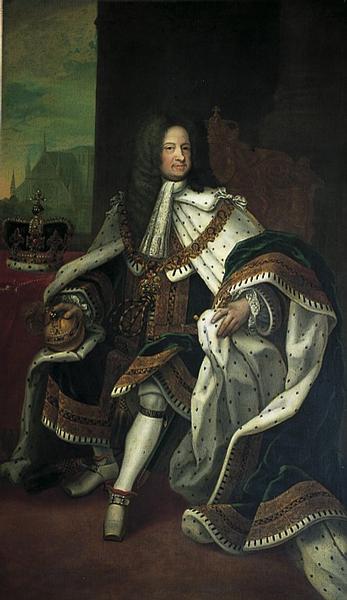The Coronation of King George I in 1714 marked the beginning of a new dynasty on the throne of Great Britain but its crowning moment was rather a difficult affair in more ways than one.
After Queen Anne’s death in August 1714, George inherited the throne due to the 1702 Act of Settlement which ensured that a Protestant became monarch. George was Elector of Hanover at the time and set out for England as soon as the news reached him.
Despite this coronation marking the start of a new dynasty in Great Britain, it was not as smooth and joyous an occasion as most would have hoped for.
The ceremony itself was somewhat difficult. Having spent most of his life in Hanover, George did not speak a great deal of English. The Archbishop of Canterbury and other clergymen involved in the Coronation service spoke little German. Therefore much of George I’s coronation was conducted in Latin, as both George and the members of the clergy could understand it.

George I was crowned alone as his marriage had ended in misery. Sophia Dorothea of Celle married George in 1682, but the marriage was not happy. She had an affair with the Swedish Count Philip Christoph von Königsmarck in the early 1690s. In July of 1694, Königsmarck disappeared without a trace. Shortly afterwards, George petitioned for divorce and the marriage was dissolved by the end of the year. She spent the rest of her life imprisoned in Ahlden House and was never granted the title of queen.
George’s coronation was not particularly popular with the public, and it was actually marked by considerable riots. There were several riots in the South and West of England to protest George’s accession, including by High Church Anglicans and Jacobite Catholics. Although the government did attempt to legally try a handful of the rioters, it was unsuccessful.
King George I ruled between 1714 and 1727. On his death, he was succeeded by his son, King George II.

